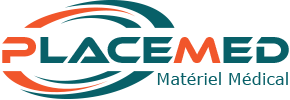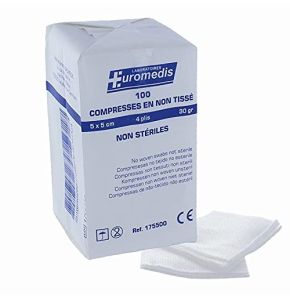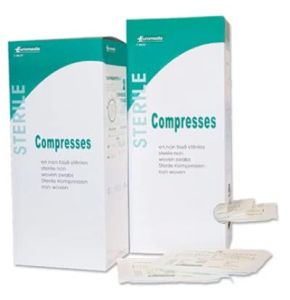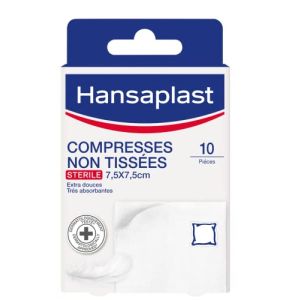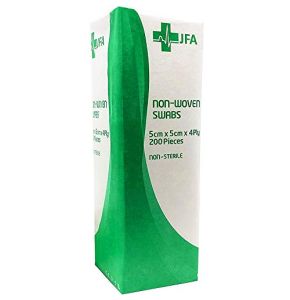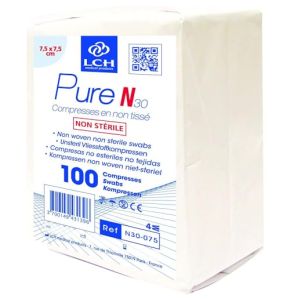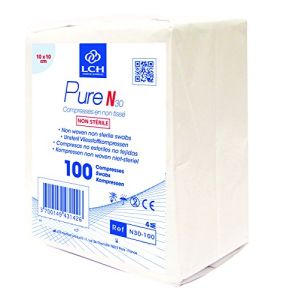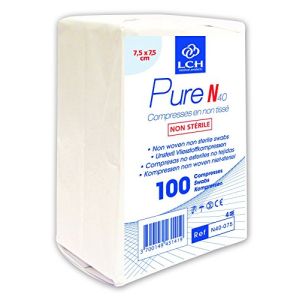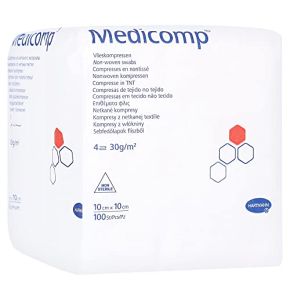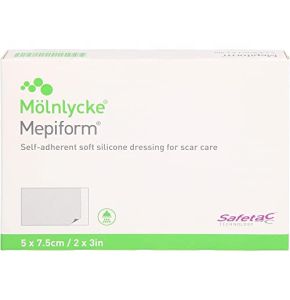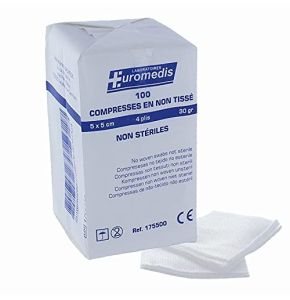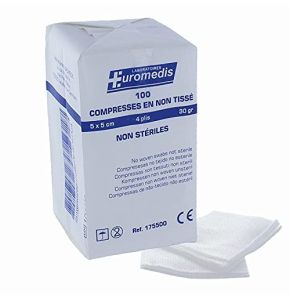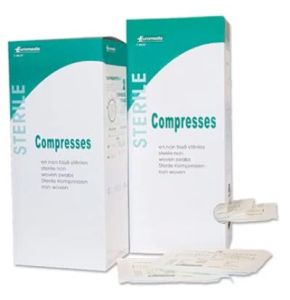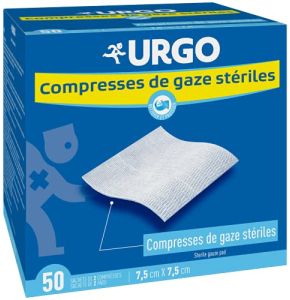Dressing Pad
18/11/2024 16
18/11/2024 22
18/11/2024 13
18/11/2024 10
18/11/2024 18
18/11/2024 14
18/11/2024 15
18/11/2024 13
18/11/2024 21
18/11/2024 22
18/11/2024 14
18/11/2024 21
18/11/2024 12
18/11/2024 19
18/11/2024 18
18/11/2024 20
18/11/2024 16
18/11/2024 21
18/11/2024 17
18/11/2024 9
18/11/2024 20
18/11/2024 15
18/11/2024 12
18/11/2024 13
18/11/2024 16
18/11/2024 24
18/11/2024 19
18/11/2024 12
18/11/2024 9
18/11/2024 11
18/11/2024 12
Medical Compresses: Essential for Effective Care
Compresses are essential elements in medicine. They are used to clean, protect, and aid in wound healing. Used by healthcare professionals and individuals alike, they are indispensable for effectively treating injuries. Choosing the right compress and using it correctly is crucial to ensure quick healing and prevent infections. At Placemed, we offer a wide range of compresses tailored to various needs. In this comprehensive guide, we will explore in detail the different types of compresses, how to choose them, techniques for proper application, signs of improper use, and how to maintain them for optimal effectiveness.
What are the different types of compresses and their specific uses?
There are several types of compresses, each with specific uses. Knowing their differences helps in choosing the most suitable one for the situation. Here are the main types of compresses and their uses:
- Sterile Compresses: They are individually packaged to remain clean. Used on open wounds, they prevent germs from entering the injury. They are ideal for cuts, abrasions, and surgical wounds.
- Non-Sterile Compresses: Used to clean intact skin or protect non-infected areas. They are less expensive and suitable for routine care where sterility is not necessary.
- Impregnated Compresses: Soaked with substances like antiseptics or ointments. They promote healing by delivering active agents directly to the wound. Perfect for burns or skin ulcers.
- Absorbent Compresses: Designed to absorb exudate (fluids) from wounds. They keep the area dry and clean, which aids in healing. Used for wounds that ooze heavily.
- Non-Woven Compresses: Made from synthetic fibers, they are soft and non-fluffy. They are ideal for sensitive wounds or when it is necessary to avoid fibers sticking to the wound.
- Gauze Compresses: Lightweight and breathable, they are used to clean wounds or apply solutions. They can be folded or cut to fit the size of the injury.
Each type of compress plays a specific role in wound care. It is important to choose the one that best meets the needs of the injury to ensure optimal healing.
How to choose the appropriate medical compress for a particular injury?
Choosing the right medical compress is essential for effective wound treatment. Here are the criteria to consider for making the right choice:
- Size of the Wound: The compress must cover the entire wound and extend slightly beyond the edges for complete protection. For small cuts, a small compress is sufficient. For larger wounds, an appropriately sized compress or multiple compresses are needed.
- Level of Exudate: If the wound produces a lot of fluid, an absorbent compress is necessary. It will keep the wound dry and prevent maceration of the surrounding skin.
- Need for Sterility: For open or surgical wounds, it is essential to use sterile compresses to prevent infections. For cleaning intact skin, non-sterile compresses may suffice.
- Skin Sensitivity: If the patient has sensitive skin or allergies, it is preferable to use non-woven compresses that are soft and hypoallergenic.
- Type of Treatment: To apply medication directly to the wound, an impregnated compress is useful. It delivers treatment continuously and protects the wound at the same time.
Considering these factors, you can choose the most suitable compress to promote quick healing and avoid complications.
What are the best practices for using and changing compresses?
Correct use of compresses is important for wound care. Here are the steps to follow to ensure safe and effective application:
Preparation
Before applying the bandage, always wash your hands with soap and water or use a hand sanitizer. This prevents contaminating the wound with germs.
Applying the Compress
Open the compress package just before use to maintain sterility. Gently place the compress on the wound without touching the surface that will contact the injury. If necessary, secure the compress with a bandage or medical tape.
Frequency of Changing
Change the compress according to the healthcare professional's recommendations or at least once a day. If the compress is wet, dirty, or comes off, replace it immediately. This prevents infections and promotes healing.
Removing the Compress
To remove the compress, wash your hands and gently peel it off. If it sticks to the wound, moisten it with saline solution to detach it without pulling the skin. Dispose of the used compress in an appropriate trash container.
Wound Monitoring
During compress changes, check the condition of the wound. If you observe signs of infection such as redness, swelling, pus, or increased pain, consult a healthcare professional.
By following these good practices, you ensure better healing and reduce the risk of infection.
How do compresses contribute to the healing process?
Compresses play a crucial role in wound healing. Here's how they help the body heal:
- Maintaining a Moist Environment: A suitable compress helps keep the wound slightly moist, promoting cell growth and speeding up healing. A too dry environment can slow down the healing process.
- Protection Against Contaminants: Compresses act as a physical barrier, preventing bacteria and dirt from entering the wound. This reduces the risk of infection, which is essential for complication-free healing.
- Absorption of Exudate: Absorbent compresses remove excess fluid from the wound. This prevents maceration of the surrounding skin and creates an optimal environment for healing.
- Application of Treatments: Impregnated compresses allow for the application of medications directly to the wound. This provides localized and effective treatment, helping to fight infections or stimulate healing.
- Pain Reduction: By protecting the wound from friction and irritation, compresses can reduce pain and discomfort for the patient.
In summary, compresses are an essential tool to support the body in its natural healing process.
What innovations exist in compress materials to improve wound care?
Medical devices are rapidly advancing, and compresses are part of this progress. Here are some recent advancements that optimize wound treatment:
- New Fibers: Modern materials like alginates (derived from seaweed) or hydrocolloids are used to make compresses. They offer better absorption and maintain an optimal moist environment for healing.
- Compresses with Antimicrobial Agents: Some compresses are impregnated with substances like silver, known for its antibacterial properties. They help prevent infections and are particularly useful for high-risk wounds.
- Advanced Technologies: Compresses with integrated sensors can monitor the wound and provide information on moisture levels or the presence of infection. This allows for precise monitoring and quick intervention if necessary.
- Self-Adhesive Compresses: They adhere to the skin without the need for tape or bandages. This makes application easier and reduces the risk of skin irritation.
- Biodegradable Materials: Environmentally friendly, these compresses naturally decompose after use, reducing medical waste.
These innovations provide more effective and comfortable options for wound care, thereby improving the quality of life for patients.
In conclusion, compresses are a key element in wound treatment. Choosing the right compress and using it correctly makes a significant difference in healing. At Placemed, we are dedicated to providing high-quality products to meet all your wound care needs. Our comprehensive range of compresses offers the best options to ensure quick and safe healing. Do not hesitate to explore our selection and contact us for personalized advice or more information about our special offers. Your health and well-being are our priority.
 Francais
Francais 